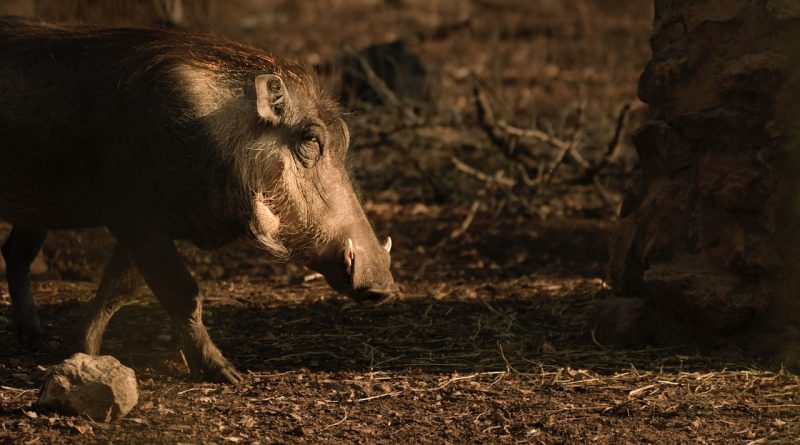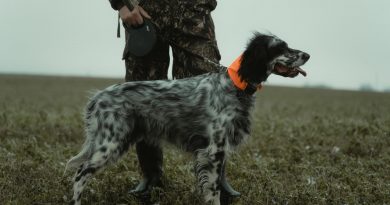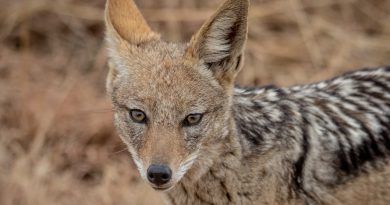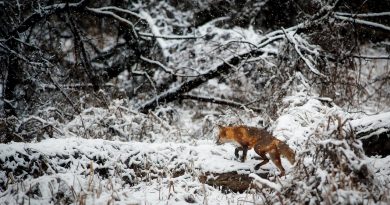What You Need for Hunting Hogs at Night – Part 1
We all love to down whitetails – but what happens when it’s springtime and deer hunting season has passed. You can’t shelve your bow or rifle and wait for the next season. Of course no!
Staying away from the wild too long isn’t a great deal for a hunter at heart. And that’s why you need to set your sights on hunting something else – hogs.
In Florida, California, Texas, and other US states, wild hog populations continue to rise. And there’s a consensus that wild hogs could overtake deer as the choicest game, that’s if they haven’t already.
Most states have some form of thriving hog population, which means there’s something to throw on your grill year-round!
Now that it’s settled you’re getting a hog (or several), know this – they rarely hang around when it’s daytime. Most hogs will skedaddle the moment they see you from a mile off. So, the cover of night is an excellent camouflage, as hogs don’t have great sight in the dark.
So, if you’re planning to down hogs, you need some more info in addition to your deer hunting prowess.
And that’s what this guide provides!
With items in this guide, you can be sure of being armed to the teeth for a successful hog-hunting adventure.
Strap up, and get moving!
Quality Firearm
When you’re going hog hunting, you can bank on your deer rifle to bring you great rewards. Anything from a .243cal is an excellent choice for downing pigs.
And when you’re aiming for a killing shot, know that hogs have a different system from deer. Hogs have their vital organs placed very tight to their shoulder region. Their heart and lungs are almost underneath their front legs, but slightly out.
Getting your first shot right is crucial to neutralizing the hog as most hogs leave pretty poor blood trails. Their fat helps them maintain poor blood loss, and they could get away if you don’t track them fast.
When you’re selecting your weapon, consider its potential to deliver two to three shots in moments. Follow-up shots could be required, particularly if you’re hunting 400 – 600lbs hogs. Some great weapon choices are .450cal and .444cal from Marlin.
If you’re looking for rifles under $800, several choices are available.
Hunting Lights
Tactical hunting lights work in two ways – locating game and lighting the way. Most hunters usually settle for green LED flashlights, as it’s difficult for hogs to pick up.
Blaring white LEDs are sure to drive your potential kills away. So, consider investing in the best hunting lights for hogs.
Thermal Equipment
With the right thermal equipment, hogs will be in your sights from several yards away. Most thermal gear available to the public offer brilliant features, so you can leverage these items for better kills
Making use of thermal gear puts the sweet spot to hit those pigs in your crosshairs. And several thermal equipment for hunting are available in stores to try out.
Dark Clothes
States have separate rules to determine the kind of clothing feral hog hunters should wear.
For example, the State of Texas mandates people hunting on public land when it’s daytime to wear 400 sq. in. of hunter orange. These hunters should also put on hunter orange headgear, and 144 sq. in. on their chest and back area.
But most states commonly allow dark clothes and camouflages. In most cases, your choice of clothes could be determined by:
- Time of year
- Conditions around wild environment (clothes that have resistance to tough conditions)
- Weather conditions
Generally, dark-colored clothes without reflective material are ideal for hog hunting. Since hogs can’t see well at night, you’ll be unseen till you get them down.
A Plan
Scout your potential hunting zone
Since it’s registered that hogs are more vulnerable at night, don’t relax at wait till it’s dark before coming out. It would be best to scout where you plan to hunt during the day.
Scouring the territory before dark is essential. Here’s what you should scout for before heading on the hunt:
Hog concentrations – maybe a hog family strolling along several paths should be ideal spots to hunt at night
Scrubs – Hogs usually scratch their hide onto trees. When you check trees around and see multiple fresh mud scrubs on trees, site your hunting spot nearby.
Nearby structures – Any houses, farms, high points, or trees (if you can hunt from above) should be checked when it’s daytime
Scat – Hog dung isn’t ropy like that of other wild animals. If you find hog dung around, it could be a great spot to get your ‘sit and wait’ hunt running.
Tracks and damage – When it’s hot season, hogs could get really uncomfortable and damage several habitats in search of water. Most of these hogs leave tracks after getting through their habitat. Following this trail could lead you to an ideal location to set up your hunt.
Bring the right tools
When you’re hunting hogs, consider bringing this gear list:
- Tough clothing
- Boots that could withstand snake bites
- Rifle from .230cal
- Hog callers
- Binoculars
- Rifle scope
- Thermal imager
- Headlamp with green or red light
- Hearing protection
- Knife
Sit and Wait or Spot and Stalk
Two hunting methods are ideal for downing hogs – sit and wait or spot and stalk. With the sit and wait method, you’ll be holed up at an ideal spot. From this spot, you can get a clean shot to an unsuspecting hog.
The spot and stalk method, on the other hand, requires some form of trailing experience to complete. When you spot a hog several yards out, you’ll have to trail it until you can take a shot.
Before heading out to the wild, know the method you plan to use.




